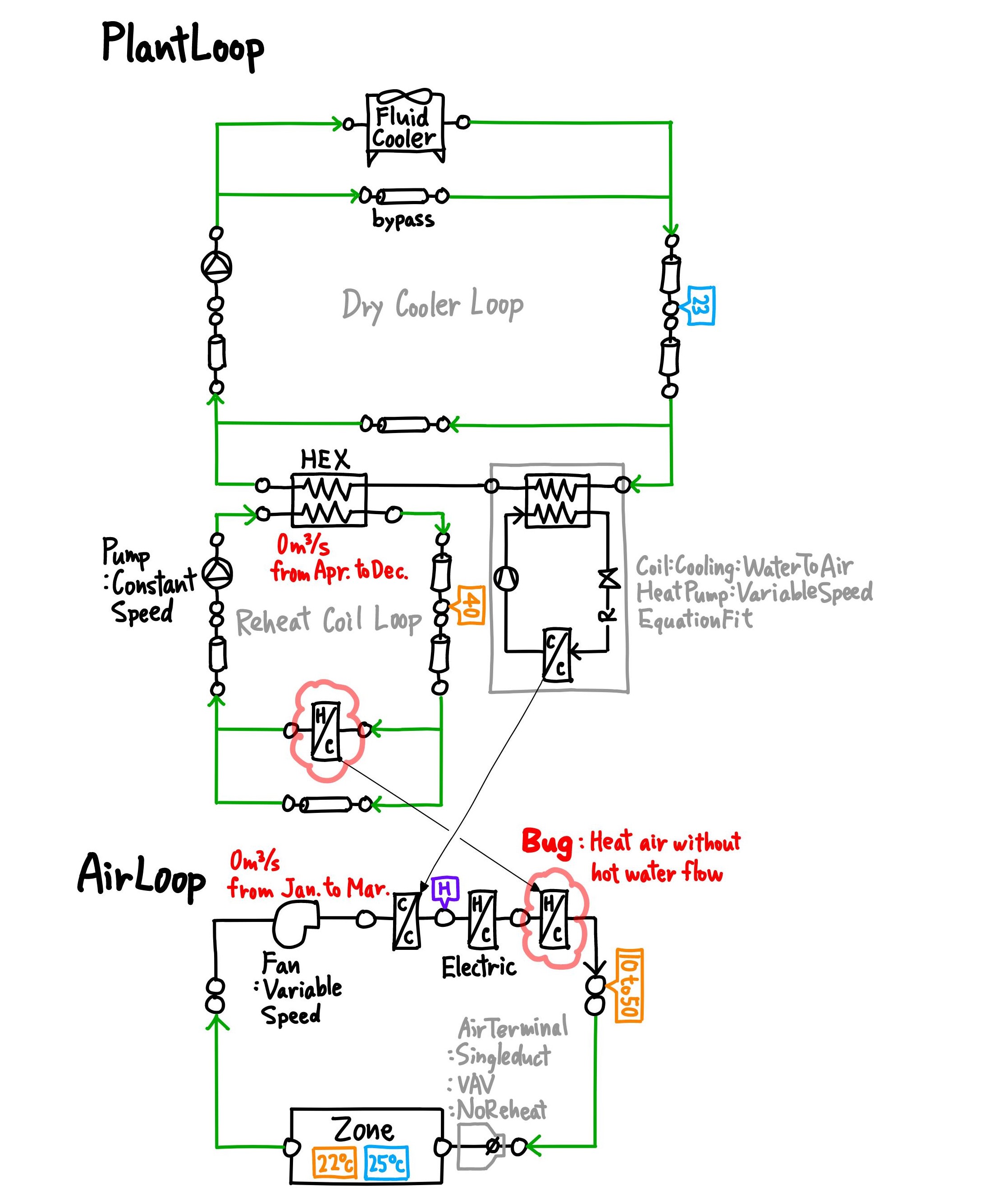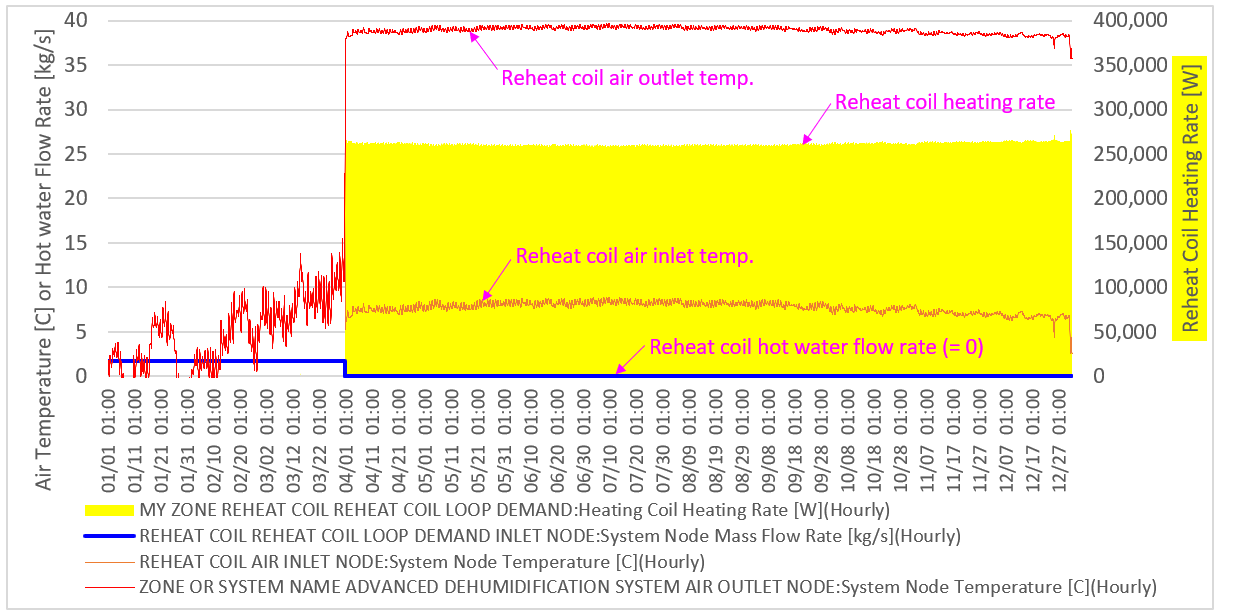First time here? Check out the Help page!
 | 1 | initial version |
This is not a perfect answer. There are many problems with your model, and this only points out some of them.
You should illustrate your model so that others can help you. A rough sketch of the schematic like the one below should be fine.

The heating coil remains inactive even when the zone temperature falls well below the setpoint. Moreover, the system seems to initiate dehumidification only starting from mid-April.
It's because the air flow is 0 m3/s at that time. One solution is that you can fill in No Load Supply Air Flow Rate Method and No Load Supply Air Flow Rate in AirLoopHVAC:UnitarySystem and also you can change Fan Schedule (Supply Air Fan Operating Mode Schedule Name in AirLoopHVAC:UnitarySystem) from 0 to 1.
Meanwhile, the reheat coil appears to elevate the temperature significantly above the cooling setpoints.
I think this is due to a bug in EnergyPlus. The reheat coil (My Zone Reheat Coil Reheat Coil Loop Demand) heats air even though there is no hot water flow. That's imposible.

The chart is here. I don't know how to solve the bug right now.
Other problems I can think of are:
Dehumidifying Relative Humidy Setpoint Shcedule Name rather than Humidifying Relative Humidity Setpoint Schedule Name in Zone Control:Humidistat. For Humidifying Relative Humidity Setpoint Schedule Name, you can input a schedule name with small values such as 0.SetpointManager:SingleZone:Humidity:Maximum.Pump:VariableSpeed rather than Pump:ConstantSpeed.Fan:SystemModel, Fan:ConstantVolume or Fan:OnOff rather than Fan:VariableSpeed.Actually, I have not modelled unitary system that much. I referred to ExampleFiles and compared with your model. Although ExanpleFiles are not necessarily correct, they are good examples of typical input. For example, UnitarySystem_FurnaceWithDXSystemRHcontrol.idf has the same CoolReheat Dehumidification Control Type as your model.
By the way, your model has so many Output:Variable objects. I recommend considering which variables to focus on and reducing them. Otherwise, you would overlook the suspicious part.
